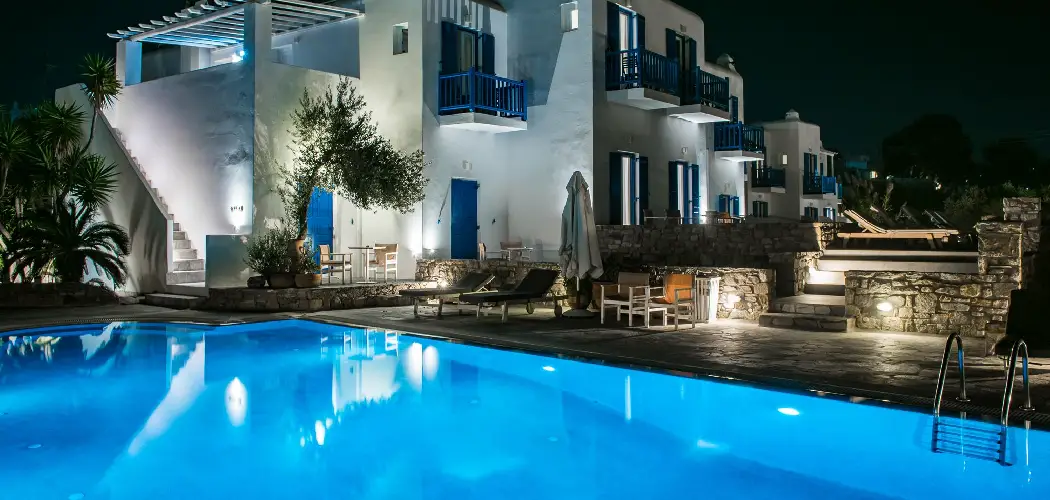Maintaining a clean and safe swimming pool is essential for every pool owner. One way to ensure that the pool water is safe and free from harmful bacteria is by super chlorination. This process involves adding a high dose of chlorine to the pool water to eliminate any contaminants that might have accumulated over time.
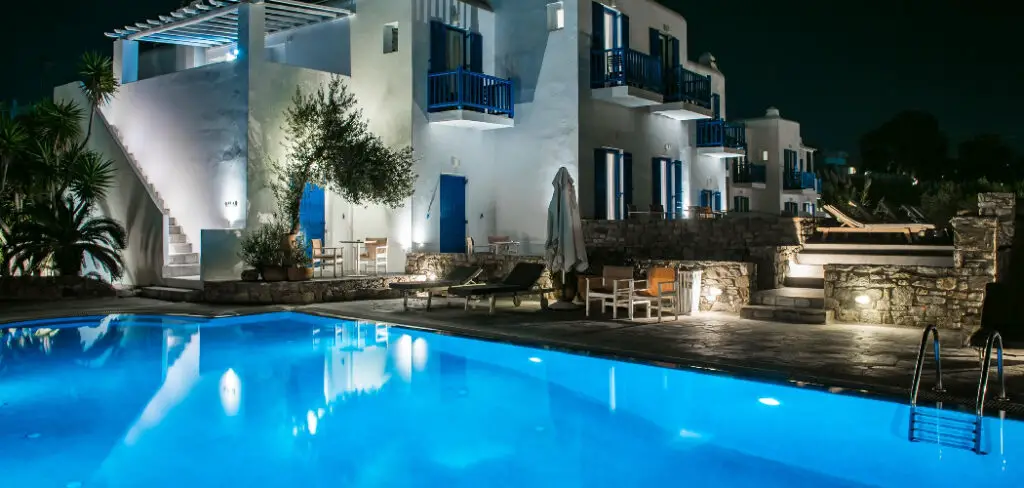
But what is super chlorination, and how do you go about it? This blog post on how to super chlorinate a pool will guide you through the process of super chlorination, giving you all the information you need to keep your pool clean and safe.
Needed Materials
Before we jump into the process, let’s first gather all the materials needed for super chlorination. This includes:
- Chlorine Shock or Granular Chlorine
- Protective Gear (Gloves, Goggles)
- Pool Test Kit
- Bucket for Mixing
- Measuring Cup or Scale
It is crucial to have the right amount of chemicals and protective gear to avoid any accidents or chemical imbalances in the pool water.
10 Step-by-step Guidelines on How to Super Chlorinate a Pool
Step 1: Test the Pool Water
The first step before super chlorination is to test the pool water. It is essential to know the current levels of chlorine in your pool to determine how much more you need to add. You can use a pool test kit to measure the chlorine levels, pH levels, and alkalinity of the water. It is recommended to do this test during the day when the sun is out because sunlight can affect chlorine levels. You should also test the water after every 3-4 hours of super chlorination to ensure that the levels are back to normal before re-entering the pool.
Step 2: Calculate the Amount of Chlorine Needed
Once you know the current level of chlorine in your pool, you can calculate how much more you need to add. The ideal amount for superchlorination is 10 times the normal amount of daily chlorine dosage. For example, if your pool requires 1 pound of chlorine daily, you will need 10 pounds for super chlorination. It is also recommended to add an extra pound of chlorine for every 10,000 gallons of water in the pool.
Step 3: Dilute Chlorine Shock
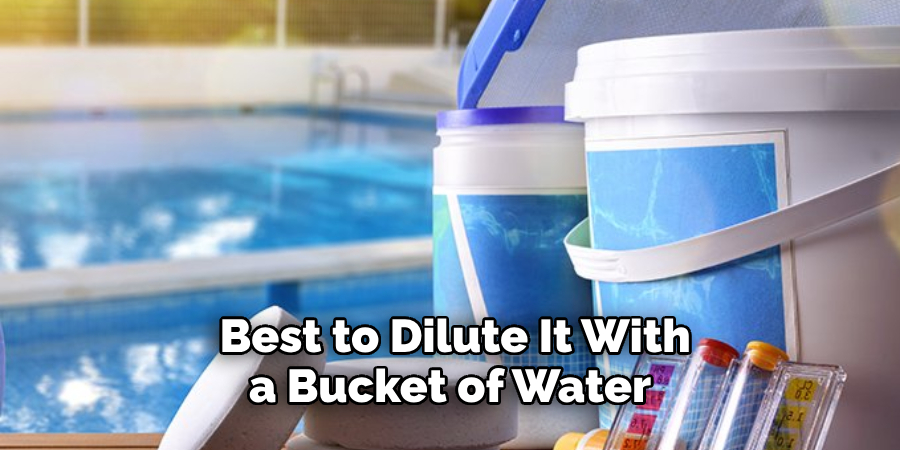
If you are using chlorine shock, it is best to dilute it with a bucket of water before adding it to the pool. This will prevent any concentrated spots of chlorine that may damage your pool liner or cause skin irritation. To dilute, add 1 pound of chlorine shock to a bucket of water and stir until it dissolves. But if you are using granular chlorine, you can skip this step. This type of chlorine is already in a powdered form and can be directly added to the pool.
Step 4: Put on Protective Gear
Before handling any chemicals, always remember to put on protective gear such as gloves and goggles. These will protect your skin and eyes from any potential harm. It is essential to prioritize safety when handling chemicals. You can also consider using a mask to avoid inhaling any fumes. It is also advisable to super chlorinate on a calm day to prevent any chemicals from blowing into your face.
Step 5: Add Chlorine to the Pool
Now that you have calculated and diluted the chlorine, it’s time to add it to the pool. Start by pouring the diluted chlorine or granular chlorine around the edges of the pool while walking around it. This will ensure that the chlorine is evenly distributed throughout the pool. But if you have a pool skimmer, you can also sprinkle the chlorine shock directly into the skimmer basket and let it dissolve into the water.
Step 6: Brush the Pool
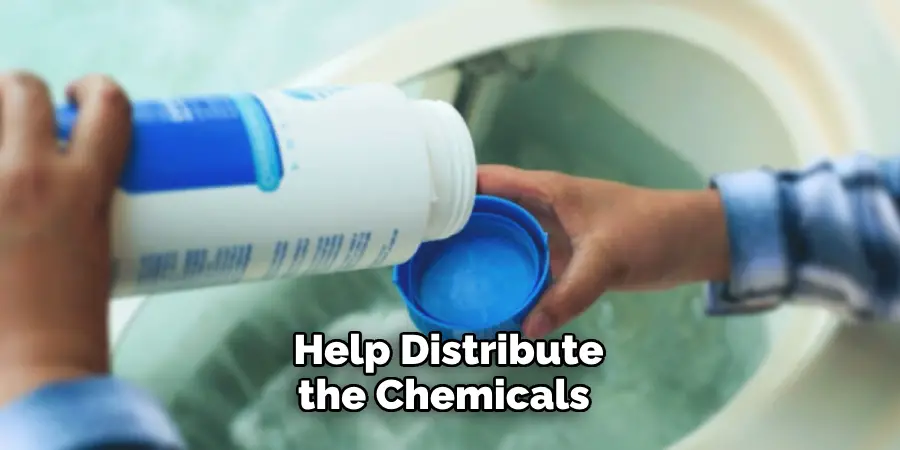
After adding the chlorine, use a pool brush to scrub the walls and floor of your pool. This will help distribute the chemicals even further and loosen any algae or debris that may be stuck on the pool surface. It is also essential to clean the pool filter after brushing to ensure it can effectively remove any contaminants from the water. But remember to use a pool brush with nylon bristles, as wire brushes can damage the pool surface.
Step 7: Run the Pool Pump for an Extra Hour
To circulate the chlorine effectively, it is best to run your pool pump for an additional hour after super chlorination. This will help distribute the chemicals throughout the pool and prevent any concentrated areas. You can also leave the pool pump running for at least 8 hours after super chlorination to ensure that the water is properly filtered. It is advisable to superchlorinate at night so that the pump can run overnight.
Step 8: Wait for Chlorine Levels to Drop
After running the pool pump for an extra hour, you should let the chlorine levels drop before entering the pool. It usually takes about 8-12 hours for chlorine levels to drop back to a safe level. But if you want to speed up the process, you can add sodium thiosulfate or chlorine neutralizer to the water. The amount needed will depend on the initial chlorine levels and the size of your pool.
Step 9: Test and Adjust Pool Water
After waiting for the appropriate time, test the pool water again using your pool test kit. The chlorine levels should be back to normal, between 1-3 ppm (parts per million). If the levels are still high, repeat step 8 until they reach a safe level. You can also adjust other pool chemicals such as pH and alkalinity if needed. It is essential to maintain proper chemical balance in your pool for a safe and enjoyable swimming experience.
Step 10: Enjoy a Clean and Safe Pool
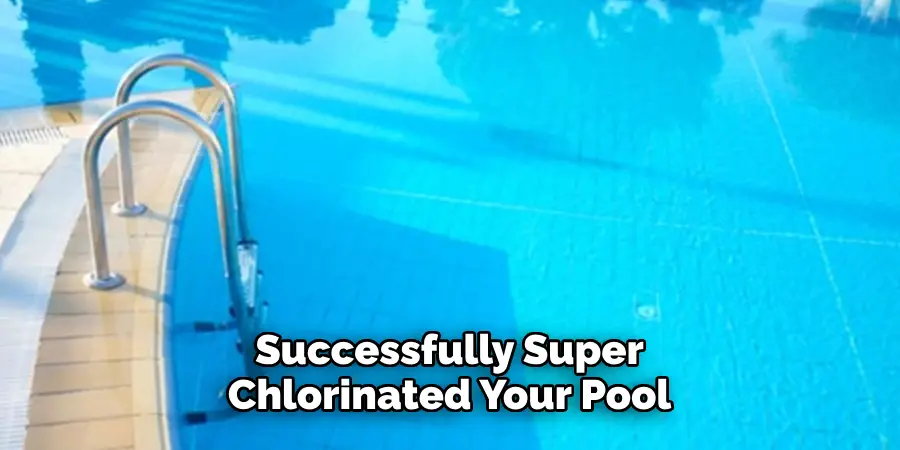
Congratulations, you have successfully super-chlorinated your pool! Now that the water is clean and safe, you can enjoy a refreshing swim without worrying about any contaminants. Remember to test the pool water regularly and perform super chlorination at least once a week to maintain a healthy pool for you and your family to enjoy. So go ahead and dive in, your sparkling clean pool awaits!
Following these step-by-step guidelines on how to super chlorinate a pool will not only help you keep your pool clean and safe, but it will also prevent any potential problems that may arise from improper super chlorination. Regularly adding chlorine to your pool is essential for maintaining proper sanitation and preventing algae growth.
Additional Tips
- Always Follow the Manufacturer’s Instructions for Handling and Storing Chemicals.
- Do Not Mix Different Types of Chlorine as They May React With Each Other and Create Harmful Fumes.
- Super Chlorination Should Be Done at Least Once a Week, but if Your Pool is Heavily Used, You May Need to Do It More Often.
- If Your Pool Has a High Amount of Contaminants, You May Need to Super Chlorinate with Higher Amounts of Chlorine.
- Regular Maintenance and Proper Circulation of Pool Water Can Help Prevent the Need for Frequent Super Chlorination.
- Invest in a Good Pool Filter That Can Effectively Remove Contaminants and Reduce the Need for Super Chlorination.
- Always Keep Chemicals Out of Reach of Children and Pets to Avoid Accidents.
- If You Notice Any Signs of Algae Growth or Cloudy Water, Perform Super Chlorination Immediately to Prevent Further Contamination.
- If You Have a Saltwater Pool, You Can Still Perform Super Chlorination Using a Non-Chlorine Shock or by Increasing the Salinity Levels.
- Always Test Your Pool Water Before and After Super Chlorination to Ensure Proper Chemical Levels.
- Regularly Cleaning and Maintaining Your Pool Can Help Reduce the Need for Super Chlorination.
- Never Swim in a Pool That Has Just Been Super Chlorinated, Wait for the Chlorine Levels to Drop Back to Normal Before Entering.
- Lastly, Always Prioritize Safety and Follow Proper Procedures When Handling Chemicals. End of Document
Frequently Asked Questions
Q1: How Often Should I Super Chlorinate My Pool?
A: Super chlorination should be done at least once a week, but the frequency may vary depending on factors such as pool usage and contamination levels. It is always best to test your pool water regularly and perform super chlorination when needed.
Q2: Can Super Chlorination Be Done in Saltwater Pools?
A: Yes, superchlorination can be done in saltwater pools using a non-chlorine shock or by increasing the salinity levels. However, make sure to follow the instructions specific to your saltwater system.
Q3: Is Super Chlorination Safe for My Pool?
A: Yes, super chlorination is a safe and effective way to clean your pool. Just remember to follow proper procedures and safety precautions when handling chemicals. It is also important to test the water before swimming to ensure chlorine levels have dropped back to normal.
Q4: Can I Swim in My Pool After Super Chlorination?
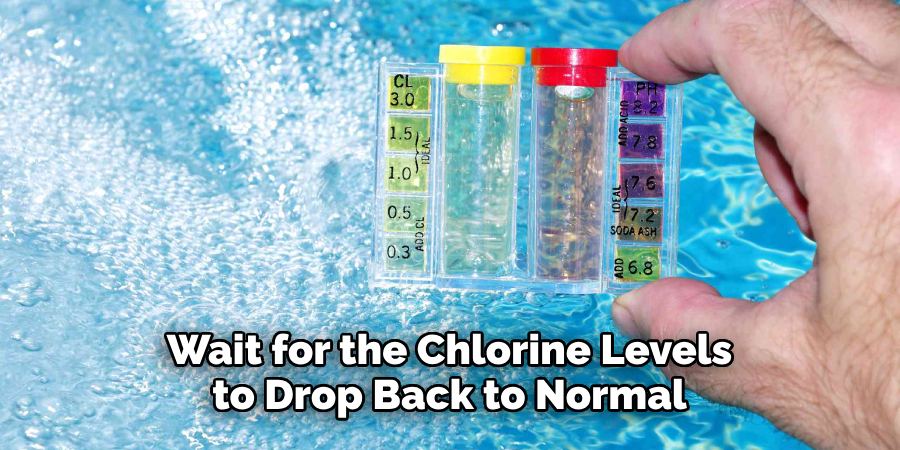
A: No, it is not safe to swim in a pool that has just been super chlorinated. Wait for the chlorine levels to drop back to normal before entering the pool. This usually takes about 8-12 hours, but you can speed up the process by using a chlorine neutralizer or sodium thiosulfate.
Conclusion
In conclusion, properly super chlorinating a pool can take some time but with the proper approach and knowledge, it is a task that anyone can complete. For perfect results, check the recorded data often to ensure that adjustments are being made when necessary. Remember to always practice safety when handling chemicals and wear gloves to protect your hands. Don’t forget about circulation!
Ensure the pump is well maintained and make sure all filter tanks are being backwashed frequently. Lastly on how to super chlorinate a pool, follow your pool manufacturer’s instructions for responsibilities such as testing chlorine levels, acid demand, pH level and alkalinity upkeep. Taking these steps will guarantee that you have a clean and crystal clear pool for years to come – it’s not just about getting the job done but doing it right! So don’t hesitate any longer; grab your supplies from your nearest store and get super chlorinating today!
About
Outdoor Fixes is a distinguished figure in the world of Diy design, with a decade of expertise creating innovative and sustainable Diy solutions.
His professional focus lies in merging traditional craftsmanship with modern manufacturing techniques,
fostering designs that are both practical and environmentally conscious. As the author of diy,
outdoorfixes delves into the art and science of outdoorfixes-making, inspiring artisans and industry professionals alike.
Education RMIT University
(Melbourne, Australia) Associate Degree in Design (Outdoor Fixes) Focus on sustainable design, industry-driven projects,
and practical craftsmanship. Gained hands-on experience with traditional and digital manufacturing tools, such as CAD and CNC software.
Nottingham Trent University
(United Kingdom) Bachelor’s in outdoorfixes.com and Product Design (Honors) Specialized in product design with a focus on blending creativity with production
techniques. Participated in industry projects, working with companies like John Lewis and Vitsoe to gain real-world insights.
Publications and Impact
In diy, Outdoor Fixes his insights on indoor design processes, materials, and strategies for efficient production.
His writing bridges the gap between artisan knowledge and modern industry needs, making it a must-read for both budding designers and seasoned professionals.

